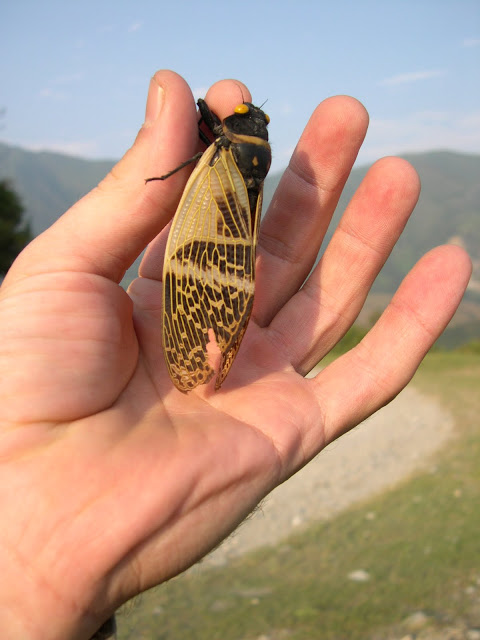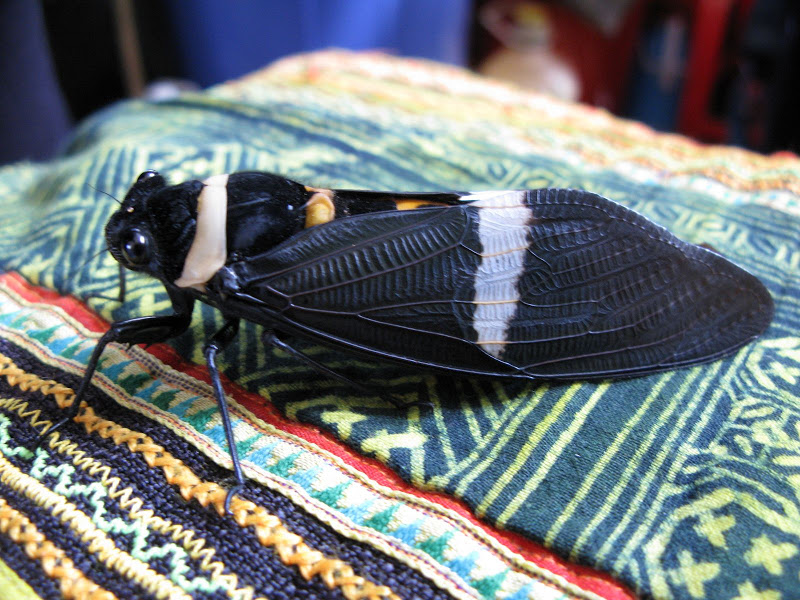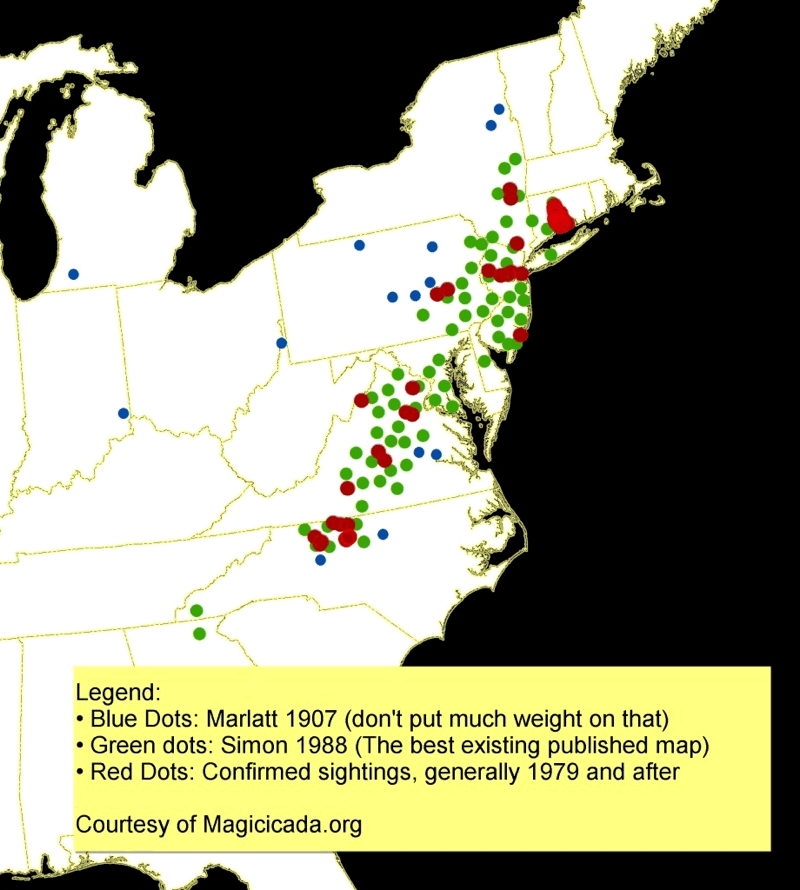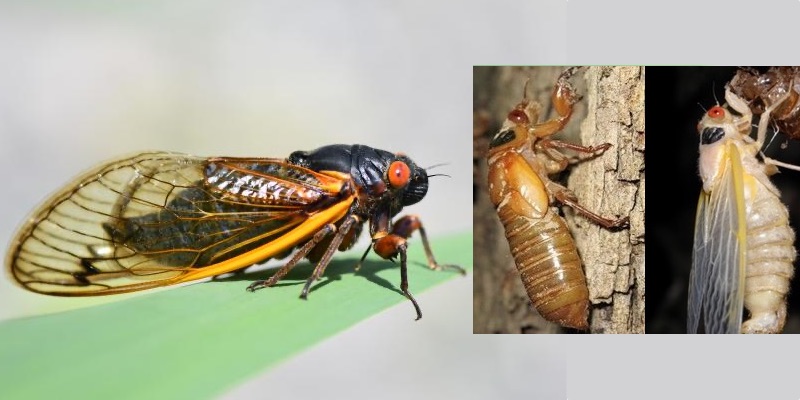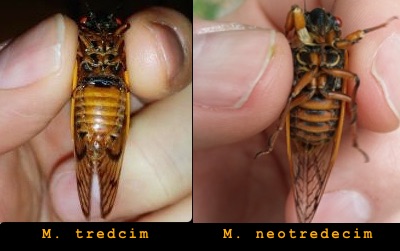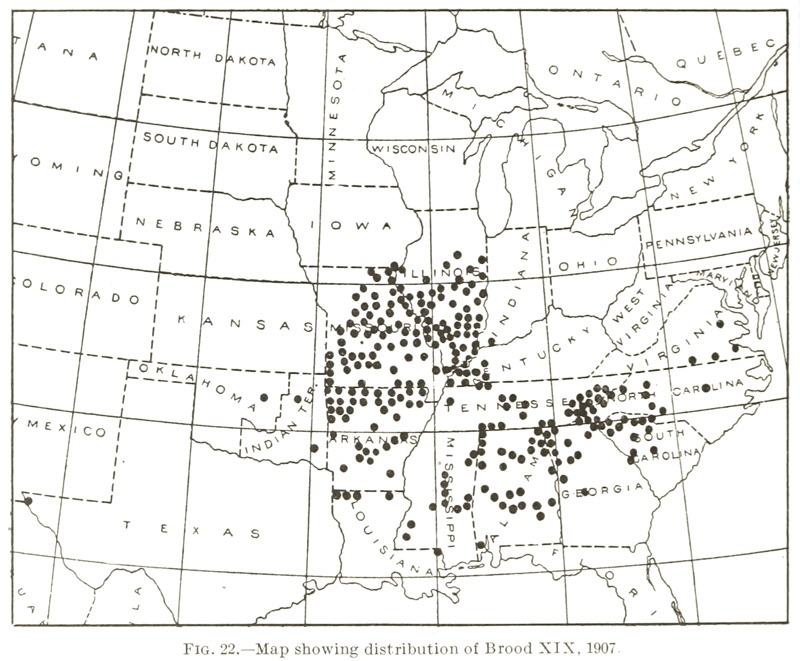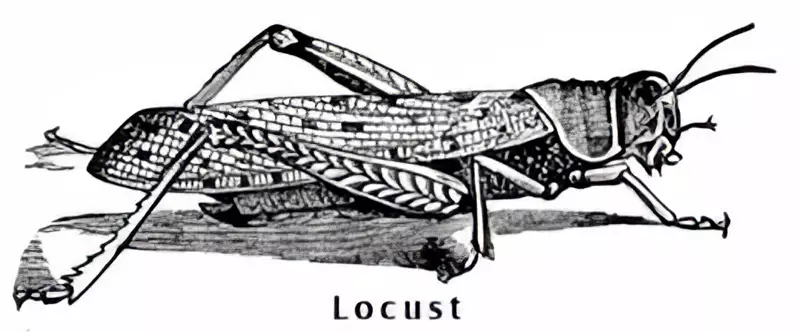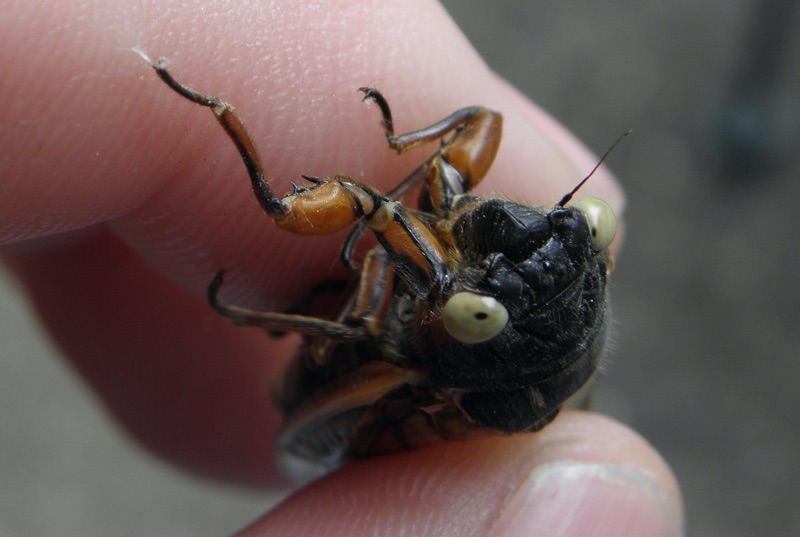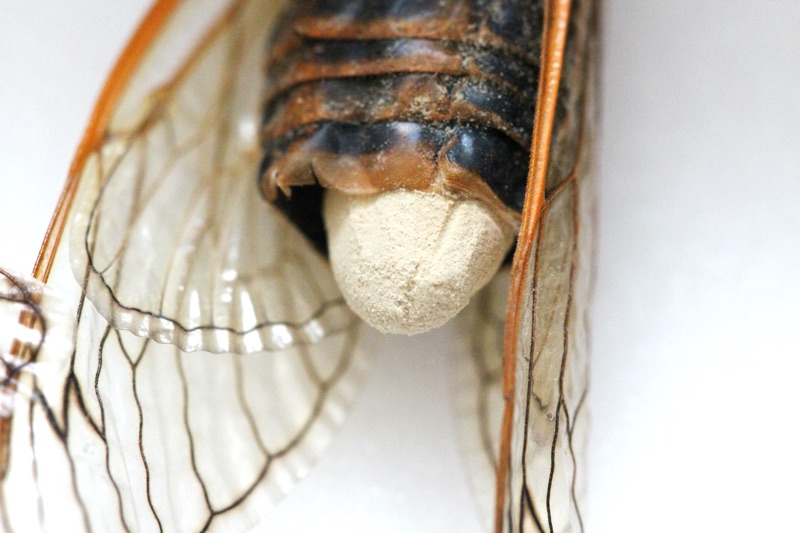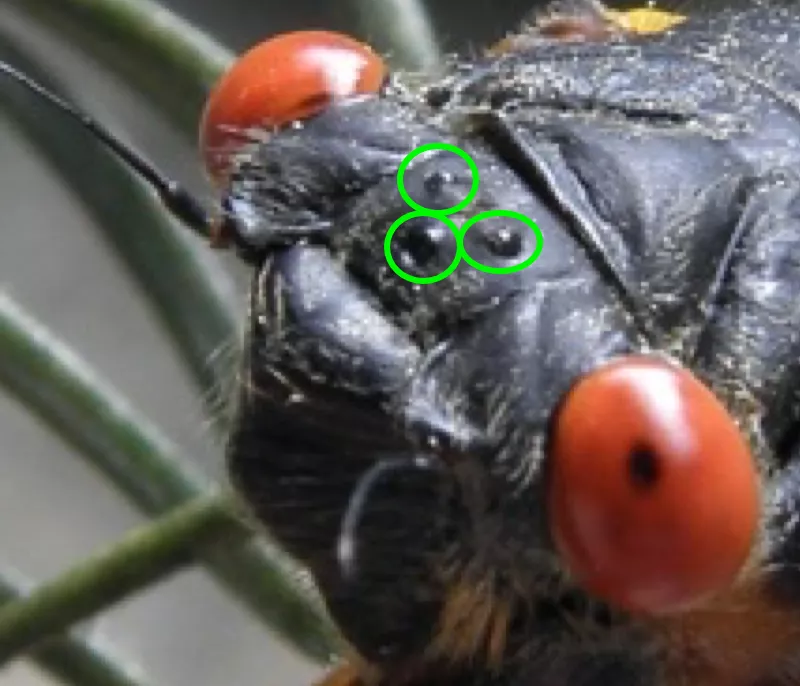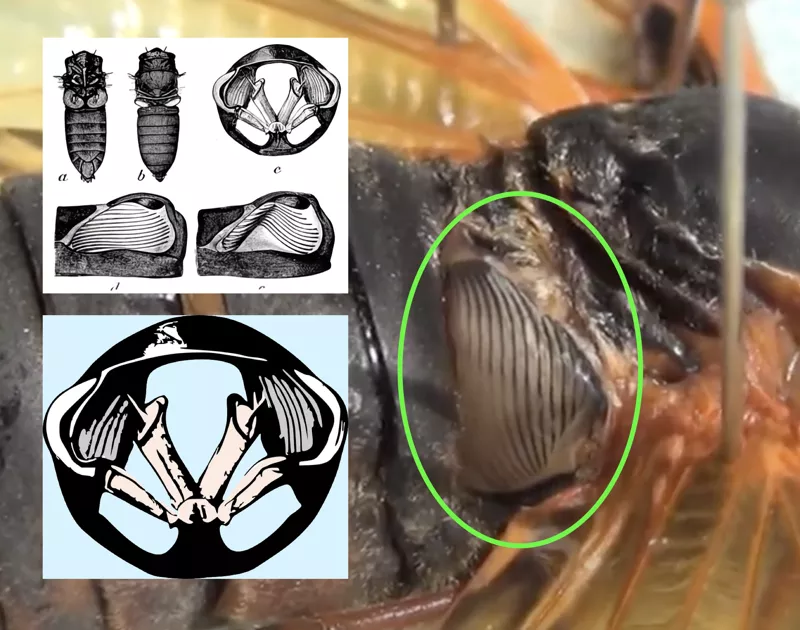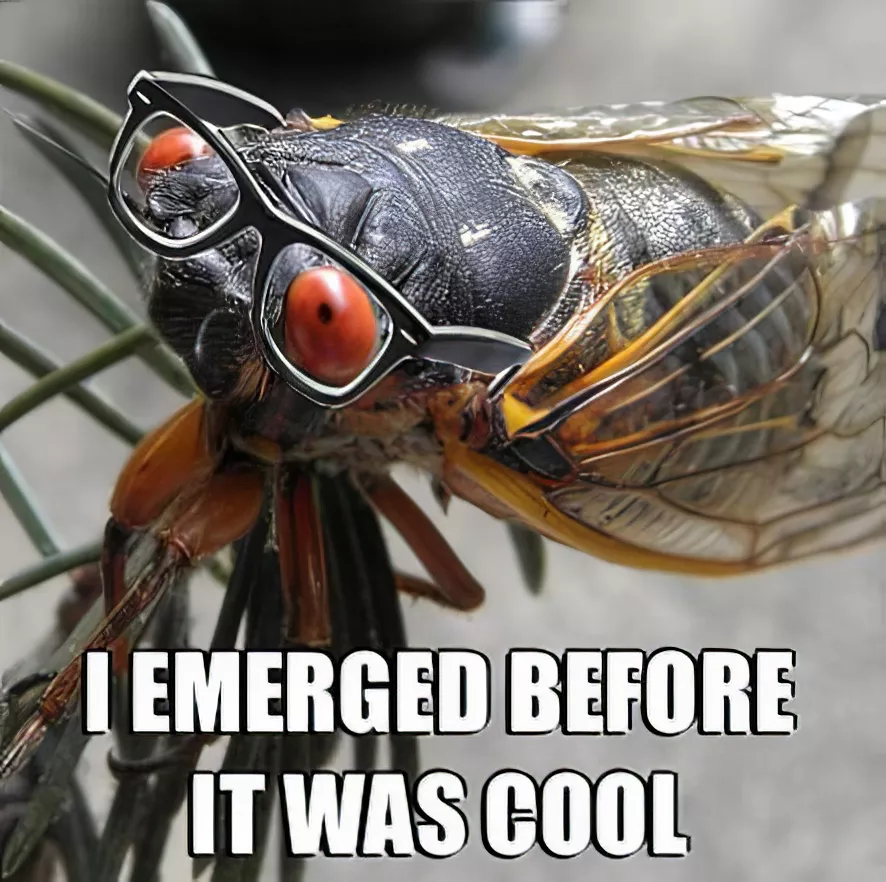Are you preparing for the 2013 invasion of the Brood II Magicicada? If so, what type of cicada prepper are you?
Every type of prepper
If you’re visiting Cicada Mania, you’re probably trying to figure out when and where the Brood II cicadas will emerge. We have a page for that.
Once the cicadas arrive you’re also going to report them to Cicadas @ UCONN (formerly Magicicada.org), right? You’re also going to upload your photos and video to Facebook, Flickr, Twitter, YouTube, Vimeo, Pinterest, and Instagram, right? You’re going to tag your photos & video with appropriate tags like #BroodII, #Magicicada, and #17YearCicada as well.
Kid Scientist:

Kids will probably enjoy a cicada emergence more than any one group of people. Kids will want to learn, capture, collect, observe, photograph, draw, and write about cicadas.
If you want to learn about cicadas, there are many cicada websites, including Cicada Mania. There are also many books to read; ask your local library to obtain a few of them.
Capturing periodical cicadas is easy. Unlike other insects, these cicadas are slow and easy to grab when they’re on the ground on low on a tree. You can use a butterfly net if you want to catch one in flight. At night, when they first emerge, they are especially easy to catch. You can use a flashlight to spot them coming out of the ground, and shedding their skins on tree branches.
A portable butterfly pavilion is a great place to temporarily keep and observe cicadas. It’s a lot better than a coffee can with holes punched in the lid. Another good option is to use an old aquarium and turn it into a terrarium filled with natural objects, like tree branches. You can also wrap a tree branch with netting and place the cicadas inside that, and observe then in their natural habitat.
It’s good to have a magnifying glass or a camera with a zoom feature so you can observe the cicadas up close. If you have a camera, make sure you take plenty of photos and videos so you have something to remember about the cicadas.
Preparation list:
- Books and website links for research
- A flashlight to look for them at night
- A camera to take photos or video (a smart phone works just fine). Don’t forget to record their songs.
- A container or habitat to keep them in. Options include:
- A butterfly pavilion
- A terrarium
- A tree branch wrapped in fine netting
- The classic jar or tin can, for temporary storage
- A magnifying lens to see them up close
- Art supplies to draw or paint pictures of them
Amateur Cicada Researcher
Do you consider yourself a citizen scientist or amateur cicada researcher?
Prior to the emergence cicada researchers will monitor the temperature of the soil, using a ground thermometer, or a cicada tracker. They will also monitor the ground for dime-sized holes and cicada chimneys.
Each night the cicada researcher will check the ground at the foot of trees, waiting for the first emerging nymphs.
Once the nymphs start to emerge, the cicada researcher will record the location, take photos, video, and take notes on the number of cicadas observed. The researcher will also likely keep some samples of the cicada population.
After about a week, the male cicadas will be ready to sing. At this point, the researcher will record the cicada’s song with an audio recording device.
If you’re interested in collecting specimens, Bioquip has plenty of pinning and mounting, insect storage and netting supplies.
Massachusettes Cicadas has a good article on pinning cicadas.
Preparation list:
- Measure the soil temperature: a Thermometer or Cicada Tracker
- GPS Device: a device to tell your location, for use in mapping the emergence
- Carry and Observe: butterfly pavilion; netting to wrap around a tree branch; a terrarium
- Cameras: SLR cameras, video cameras, web cams, or even the camera in your smart phone
- Computer: use your PC, tablet or smart phone to access the internet and record and report your findings
- Pen and paper: just in case technology fails you
- Supplies for pinning and storing specimens: get the supplies you need to preserve the specimens you keep
- Chat with an expert: join the Facebook Cicada Group and chat with fellow cicada researchers and experts
- Transporation: if you plan on helping to map the cicada emergence, you’ll need a bike, car or truck to travel around in. Bonus points, if the vehicle has a GPS device.
Nature Photographer:
My best tip for photographers and videographers is practice shooting at night. Most Magicicadas will emerge at night, and you don’t want to miss their emergence and amazing transformation from nymph to adult!
My trick is to point a flashlight beam at the cicada — that way the camera will see the cicada and you won’t spend a lot of time getting the camera to focus and flash in the dark.
Don’t forget your best macro lens as well, to get great up-close shots.
Preparation list:
- Your camera and equipment
- A tripod
- A macro lens
- A flashlight
- Practice shooting at night
Insect Gourmet:
Yes, a lot of people eat cicadas! People add them to stews, chili, or just fry them up with spices! People even add them sweets like cookies and ice cream! I like to call them “shrimp of the dirt”.
Cicadas, like all insects, are arthropods — just like lobsters, shrimp and crabs — so you might be able to prepare them using similar spices. Buttered, spicy cicada — nummers!
My tips: 1) You do not want to eat them if your neighbor has sprayed them with insecticide first; 2) I hear they’re tastiest when they’re still recently emerged and white (teneral); 3) Consult your doctor before eating any creature that has lived underground for 17 years.
I, personally, haven’t tried to eat a cicada. I’m not squeamish; I just like them too much to eat one, and I suffer from arthropod allergies (I get gout when I eat crustaceans), so I avoid trying cicadas.
More info on eating cicadas, including recipes.
Preparation list:
- Courage
- A strong stomach
- Recipes
- All the cooking implements and ingredients you need to cook ’em up
- A friend to call 911 in case you choke, have an allergic reaction or are poisoned by pesticide
Nervous Gardener:

I can sympathize with gardeners who are afraid that cicadas will damage or kill their plants. The good news is cicadas are not like true locusts. True locusts (which are actually a form of grasshopper) will strip plants of all leaves, flowers, and fruit. Cicadas only damage trees when they lay their eggs in branches. Typically a few of the weaker branches of a tree will die or weaken. The leaves turn brown, which is called flagging.
Cicadas are interested in trees. They can’t kill a large elm, maple, or oak. Where they can cause damage is to weaker ornamental flowering and fruit trees.
I’ve never personally experienced catastrophic cicada tree damage, but I’ve also never owned a flowering, miniature pear tree.
Preparation list:
- Consult with your local tree care expert. No sense in going out and buying a bunch of stuff, if you don’t need to.
- Use Netting. Placing netting around the branches of small trees will help keep cicadas off them. You can buy netting online or from a local store.
- Insect Barrier Tape. Insect barrier tape keeps cicadas from crawling up the trunks.
- Foil. Again, to keep the cicadas from crawling up the trunks.
- Hose them down/off. Cicadas like dry and warm, not cold and wet.
- Manually pick them off like grapes.
I don’t recommend pesticides for three reasons: 1) collateral damage to other species of insects like honey bees, 2) I’m tired of hearing about pets that die from eating cicadas tainted with pesticides, and 3) I think cicadas are awesome, and I want to see them survive.
Clean Up Crew:
Be prepared to have to clean up dead cicadas in your yard. Depending on the number of cicadas in your neighborhood, you might need to clean them up with rakes and shovels, buckets, and wheelbarrows. They definitely stink when they start to rot, so you might want to bury them in a large hole, and cover the corpses with lime. I’ve heard of people composting their bodies as well.
Preparation list:
- Rake
- Shovel
- A bucket or wheelbarrow
- Lime
- A net, in case they end up in your pool
